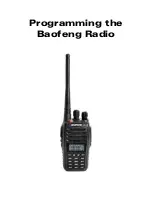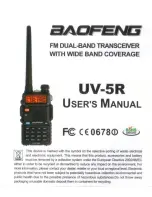
AR5000 OPERATING MANUAL PAGE 5
4-2 Looking after your receiver
Always keep the receiver free from dust and water. Use
a soft dry cloth to gently wipe the set clean. Never use
chemicals such as benzine or thinners which will damage
certain parts.
4-3 Power requirements
The AR5000 is designed for operation from an external
d.c. supply of 12 ~ 16V at approximately 1.0A minimum.
Always use the mains power supply provided, or a
regulated d.c. power supply of 13.5V @ 1.0A or more
using the optional DC3000 connecting lead. Always switch
the receiver off when connecting or disconnecting the
power lead.
Note: The d.c. input socket uses a special type of
connector. This plug / socket is of a moulded type and
pre-wired, positive is the RED wire. The chassis of the
receiver is negative ground.
The power supply is pre-fitted with the correct mains (a.c.)
plug for the appropriate market. This AR5000 power
supply has no connection to the EARTH pin of the mains
plug. A separate earth may be taken to the outer
connection of the SO239, N-type of BNC rear panel
sockets, then to a water pipe, central heating system
radiator or external earth rod. If fitting a separate external
earth rod, consider the implications carefully if your a.c.
mains supply uses a Protective Multiple Earth (PME)
system. If in doubt consult an expert electrician. Never
earth to a gas pipe!
Safety notice: Allow air to circulate around the power
supply, never cover the top with paper, clothing etc. Always
disconnect the power supply from the a.c. mains supply
when not in use.
4-4 Aerial (antenna) connection
The AR5000 has two 50 OHM aerial input sockets fitted
as standard to the rear panel. Further aerials may be
connected using the optional aerial switching unit AS5000
with switching data being fed from a rear panel accessory
socket (ACC 2).
The aerials input selection may be programmed by the
user for different bands, at default these are:
ANT 1: 50 OHM N-type socket - All frequencies
ANT 2: 50 OHM SO239 socket - User selectable
Aerial inter-series adapters are readily available to convert
from N-type, SO239 etc to BNC or other plugs & sockets
as required allowing straight forward connection to almost
any aerial.
An aerial attenuator system allows selection of AUTO,
0dB, 10dB or 20dB. The attenuator control switches in /
out of circuit the RF preamplifier and attenuator affecting
the sensitivity of the receiver. 20dB may not be selected
above 230 MHz. RF gain is also available in all modes
via a front panel rotary control, this is especially useful in
providing optimum audio quality for SSB operation.
Aerial Tuning Units (ATU)
An ATU can improve the selectivity of any receiver when
listening to the short wave bands when connected to long
wire aerials (other than a short wire of a few metres). This
valuable extra selectivity is created provided by rejecting
out of band signals enabling the receiver to single out
one band of frequencies while rejecting potentially strong
unwanted transmissions. The AR5000 has a built in
automatic preselected front end for frequencies up to
1GHz.
An ATU is usually constructed in a small box with about
two or three controls on the front panel. One disadvantage
however is the need to constantly retune the ATU when
changing frequency. An ATU of this type has no active
circuitry so is known as a passive device.
Active short wave desktop loop aerials
Designed for the short wave bands (such as the AOR
LA320), loop aerials have the advantage of small size
when compared to long wire aerials, and being within easy
reach of the operator it can be rotated to provide directivity.
The circuitry offers a small level of gain with the advantage
of selectivity similar to that of an ATU.
* For further information please refer to section 20 of this
manual regarding aerial and earth systems.







































